14.214.440 Internal Pedestrian Access and Design.
A. Purpose.
1. To improve the pedestrian and bicycling environment in Midtown by making it easier, safer, and more comfortable to walk or ride among residences, businesses, the public sidewalk, transit stops, through parking lots, to adjacent properties, and other connections throughout the city.
2. To enhance access to on- and off-site open space areas and pedestrian/bicycle paths.
B. Access to Sidewalk. All buildings shall feature pedestrian connections to a sidewalk per applicable block frontage standards in Article III of this chapter. See subsection D of this section for walkway design standards.
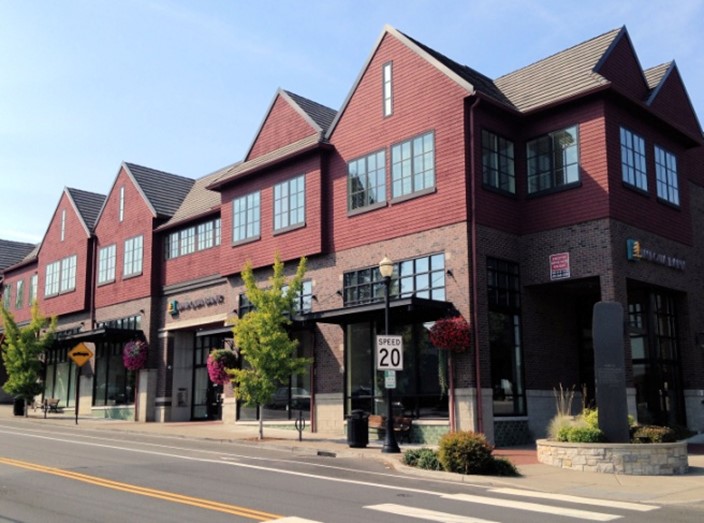
|
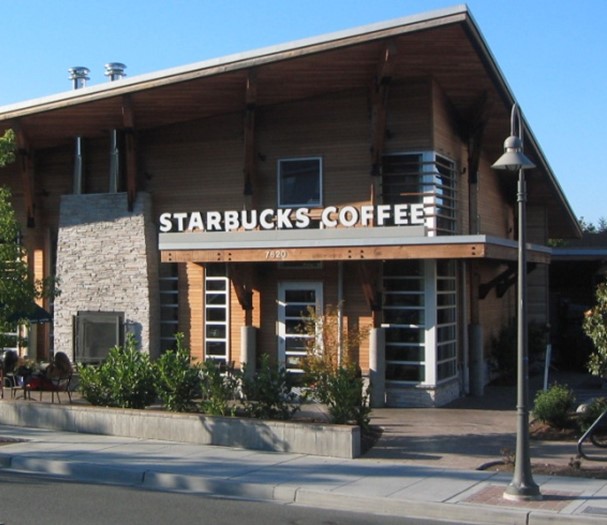
|
C. Internal Circulation.
1. Sites with multiple buildings shall provide internal circulation for pedestrians and bicycles. Pedestrian paths connecting businesses and residential entries on the same development site shall be provided. Routes that minimize walking distances shall be utilized to the fullest extent practical.
Figure 6. Internal and external pedestrian connections
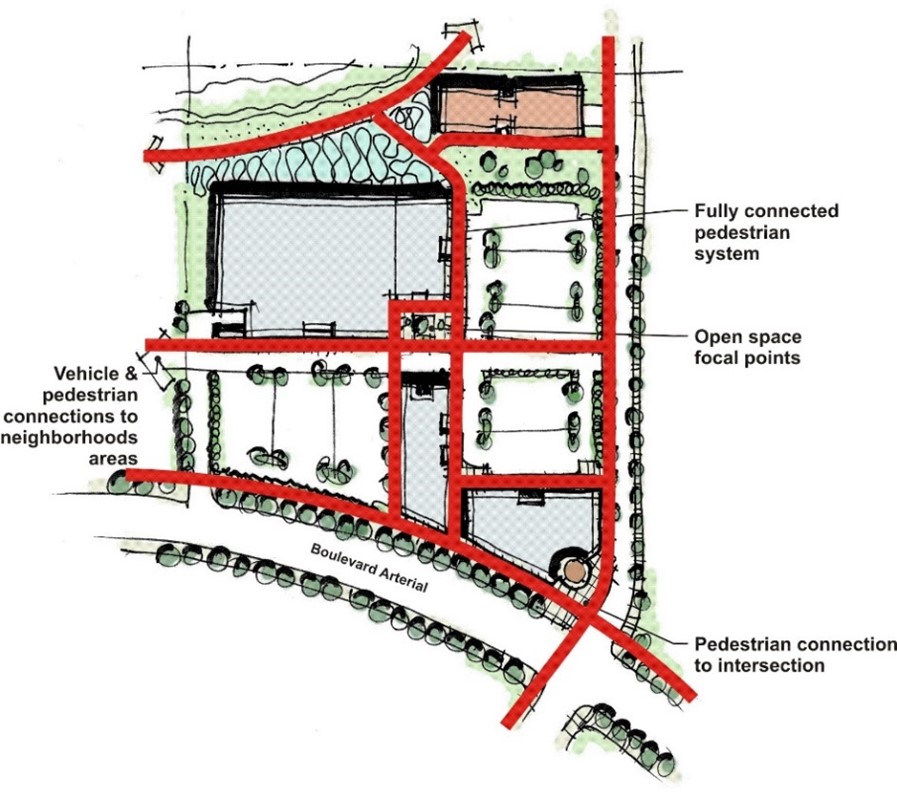
2. Sites containing residential units shall provide pedestrian access between all ground-floor entries and a public street or to a clearly marked pathway or open space that has direct access to a public street. Residential developments shall provide a pedestrian circulation network that connects all private dwelling unit main entrances on the site to the community/public areas on the site, such as:
a. Parking areas.
b. Recreational areas.
c. Common outdoor areas.
d. Any pedestrian amenities.
For townhouses or other residential units fronting the street, the sidewalk may be used to meet this standard.
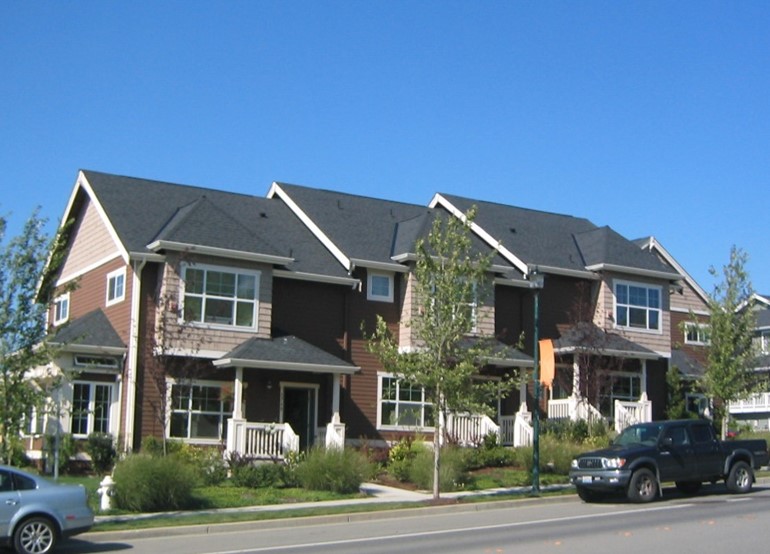
|
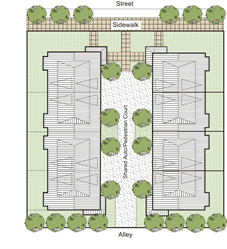
|
|
The entries of the example on the left connect directly to a public sidewalk while the entries in the right example connect to a common path that extends to the sidewalk. |
|
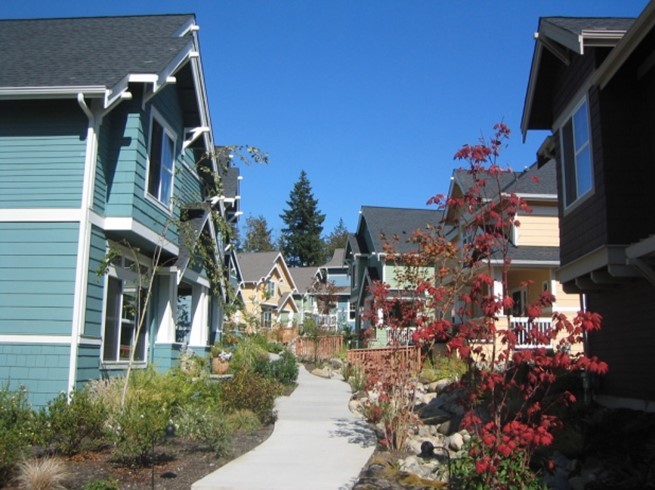
|
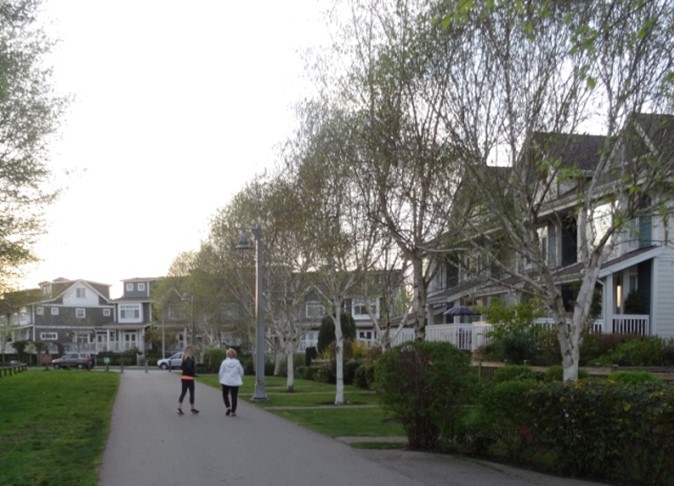
|
3. Crosswalks are required when a pathway crosses an on-site paved area that is accessible to vehicles. Crosswalks shall contain contrasting surface material and/or patterns.
4. Pedestrian walkways through parking lots are required for parking areas with fifty (50) or more parking spaces. Such walkways shall be specially marked or paved. At least one (1) pathway shall be provided for every four (4) rows of parking, at a maximum spacing of two hundred (200) feet. The pathways shall provide a safe connection to the building entrance and meet the pathway design standards in subsection D of this section, Walkway Design. See examples below.
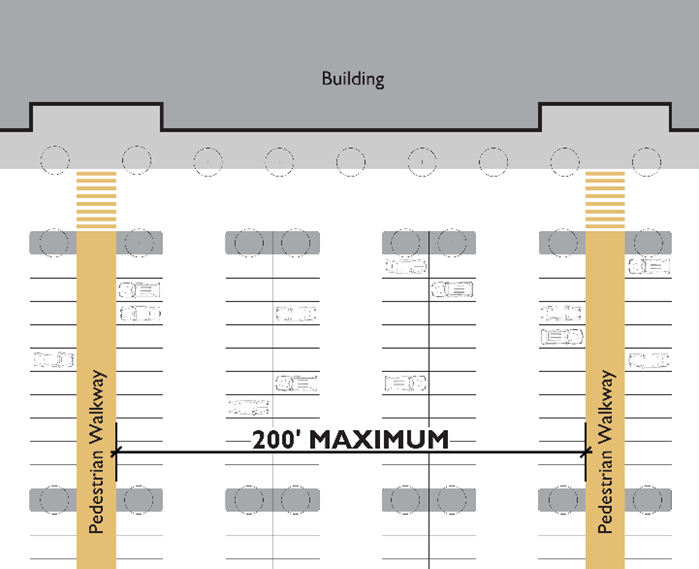
|
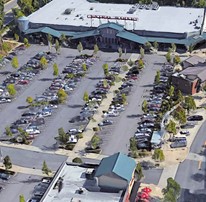
|
|
Note the location of the parking lot walkway in the upper right example (connecting shops in one (1) building to the main entry of a grocery store). |
|
D. Walkway Design.
1. All internal pedestrian walkways shall have a minimum five (5) foot wide, unobstructed walking surface, except where wider walkways are prescribed in this article or where the applicable uses and context dictate wider walkways.
2. Where a pedestrian walkway is adjacent to perpendicular or angled parking, wheel stops are required to prevent encroachment of parked vehicles over the walkway. An extra two (2) feet of walkway width may be provided in lieu of wheel stops. See SMC 14.214.480(D) for other situations in which wheel stops or curbing may be required.
3. Walkways one hundred (100) feet or more in length that are provided between a parking lot and a multi-tenant commercial or mixed-use building shall include an eight (8) foot wide sidewalk with:
a. Trees placed at an average of fifty (50) feet on-center and placed in grates or in planting strips as set forth in subsection (D)(3)(b) of this section.
b. Planting strips may be used between any vehicle access lane or parking area and the walkway, provided it contains trees per subsection (D)(3)(a) of this section and the combined walkway and planting strip is at least twelve (12) feet wide.
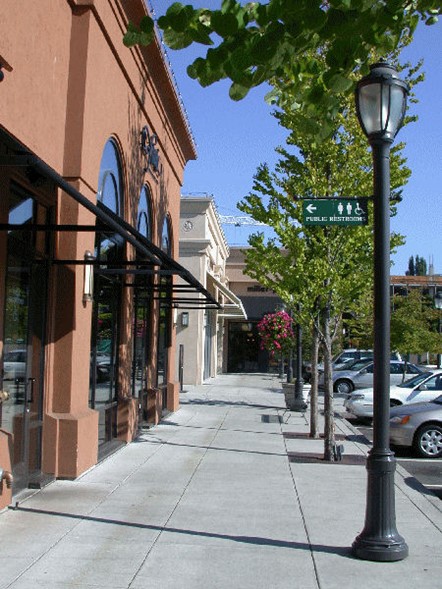
|
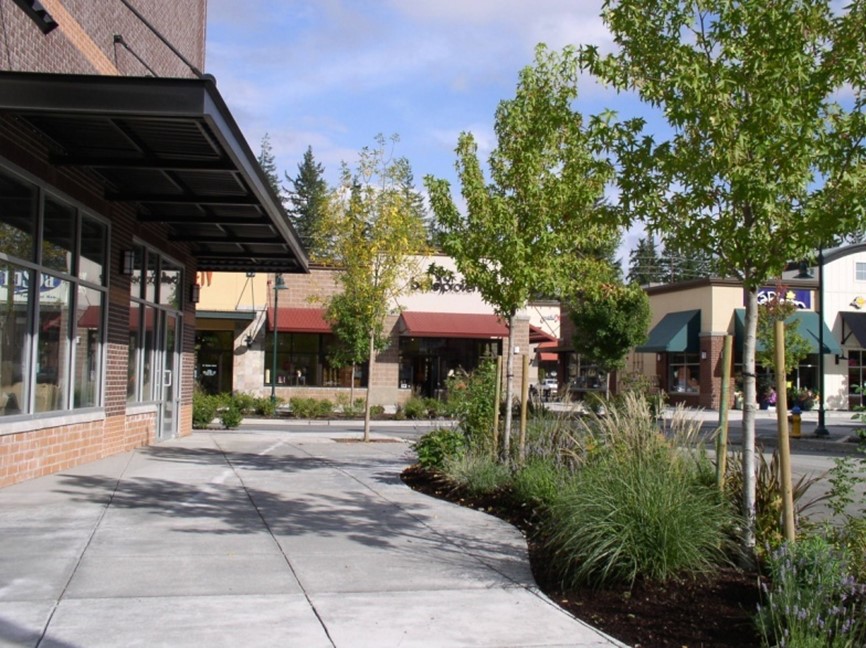
|
(Ord. 2425, 2022)